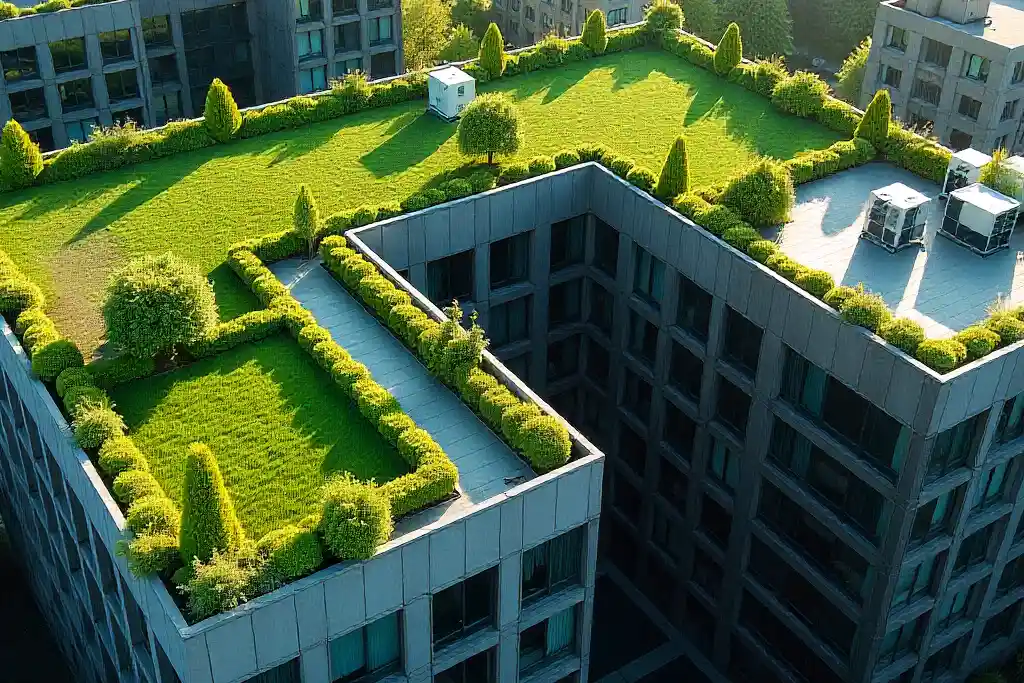Green roofing systems replace or layer over traditional materials with soil, native plants, and engineered drainage systems that allow the roof to become a living surface. They’re already popular in urban areas across the US, but we’re seeing more interest in green roofs for commercial properties right here in Oklahoma City. In this Maupin Roofing guide, we’ll discuss what makes a green roof system work, its different types, what the green roof installation process involves, and the real-life benefits that make them worth considering.
Are Green Roofs a Good Option for Commercial Buildings?
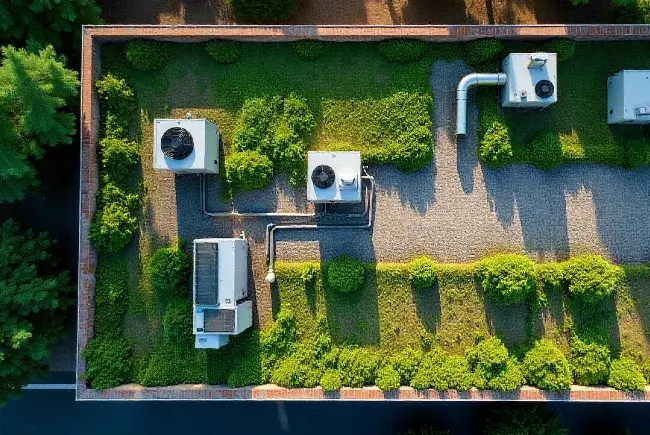
Yes, but with a few caveats. Only specific commercial buildings are a great fit for green roofs, and most are those in urban environments where cooling costs, air quality, and limited green space are real issues.
More specifically, green roofs can be especially effective on low-slope or flat roofs like retail centers, office complexes, hospitals, apartment buildings, and even warehouses. A green roof system can help extend the life of your roofing structure, save energy, and even improve your building’s marketability if sustainability is important to your clients or tenants.
That said, installing green roofs involves a little more planning than a typical re-roof. You’ll need to consider structural load capacity, waterproofing membrane condition, stormwater management goals, and long-term maintenance. Green roofing systems can weigh a considerable amount, especially after rainfall or irrigation, so structural assessments are required. If you’re retrofitting, it may require reinforcements to support the added weight of soil, vegetation, and water.
Still, when done right, a commercial green roof adds value well beyond the surface. With the right partner and plan, it can be one of the most rewarding updates you make to your property.
Benefits of Green Roof Systems for Commercial Properties
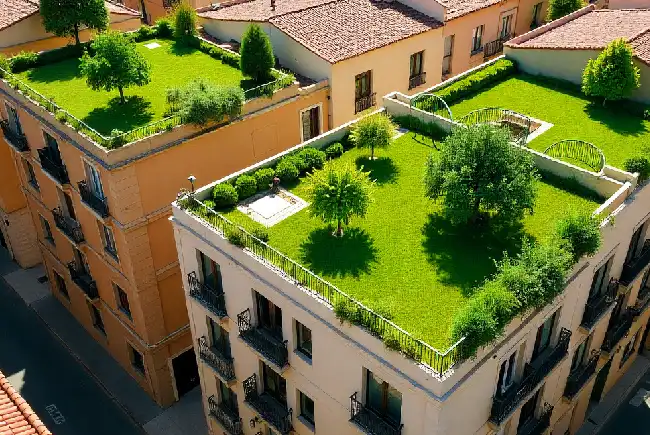
A green roof offers more benefits than just looking great. It also promotes functionality, longevity, and makes your commercial property work smarter. Here are the biggest benefits of installing green roofs:
1. Lower Cooling Costs and Better Energy Efficiency
In the peak of an Oklahoma summer, your roof can reach temperatures over 150°F. Green roofs act as a natural thermal buffer, reducing the temperature at the roof surface and helping your HVAC systems work less. The layer of soil and plant material insulates the building, keeping it cooler in summer and reducing heating costs in the winter. That means you can expect lower energy bills and improved energy efficiency over time.
Some studies estimate that green roof infrastructure can lower the energy needed for cooling by up to 50 percent. In areas with high energy demands, that adds up fast. Green roofs also help stabilize indoor temperatures, making them a good fit for offices, healthcare facilities, and schools.
2. Stormwater Management and Less Runoff
Rainfall in Oklahoma City can be intense, and stormwater runoff from large commercial roofs adds to the strain on public systems. Green roofing systems retain a portion of the rainwater in the soil and plant roots, slowly releasing it over time. This reduces the volume and speed of water entering storm drains, which helps with compliance, especially in areas with runoff regulations.
Green roof systems with proper drainage layers can manage significant rainfall per square foot, depending on the roof’s size and type. They can also filter out particulate matter, helping with water quality.
3. Mitigating the Urban Heat Island Effect
All the concrete and asphalt in urban environments tend to hold onto heat, making cities hotter than nearby rural areas. This is called the urban heat island effect. Green roofs combat this by adding living roofs to concrete-heavy spaces. As a result, the vegetation cools the air around it through evapotranspiration and provides shade.
This isn’t just good for the building; it’s good for the city. Reducing urban heat islands makes for healthier, more livable environments. Green roof installations can be part of a broader green infrastructure strategy that supports healthy cities.
4. Cleaner Air Quality, Healthier Cities
A green roof can help filter airborne pollutants, dust, and smog, especially in dense urban areas. Plants naturally trap and break down airborne toxins, improving the surrounding air quality. That can make a real difference in places like apartment buildings, schools, or hospitals.
Green roof designs that use native plants are especially effective at increasing biodiversity while reducing maintenance. You can even contribute to urban biodiversity by providing habitat for pollinators, birds, and other beneficial species.
5. Longer Roof Lifespan and Better Protection
A well-installed green roof system protects the waterproofing membrane below from UV rays, extreme temperature swings, and physical damage. This can help with insulation and significantly extend the service life of the roof, reducing long-term maintenance and replacement costs.
Instead of replacing your commercial roof every 15-20 years, a green roof can last 30-40 years or more, depending on upkeep and environmental conditions. That’s a considerable amount of value over time.
6. Attractive, Usable Space
Want to make your building stand out or provide extra value to tenants? Green roof installations can be designed as rooftop gardens or terraces—an appealing feature for office buildings, hospitality, or multi-use developments. They also look far better than a standard black roof.
Rooftop gardens using an irrigation system or drip irrigation setup can include walkways, benches, and even areas for urban agriculture or solar panels, depending on your goals.
7. Eco-Friendly Features That Earn Recognition
Installing an eco-friendly roof, aside from being good for the environment, can also earn your business recognition through programs like LEED certification. There are many benefits, including reduced stormwater runoff and improved energy performance. For example, retail centers with green roofs often enjoy cooler interiors and happier customers.
Types of Commercial Green Roof Systems
Choosing the right system depends on your goals, your building’s structure, and how you plan to use the space. Here’s a breakdown of the most common types:
1. Extensive Green Roofs

These are the most lightweight and low-maintenance options. Extensive green roofs typically have a shallow layer of soil (2 to 6 inches) and support hardy, drought-tolerant vegetation like sedums and grasses. They don’t require much maintenance, don’t need an active irrigation system, and are ideal for commercial buildings that want the performance benefits without a full rooftop garden.
They’re great for warehouses, offices, and other commercial properties that don’t expect regular rooftop traffic. Extensive green roofs are also typically the most cost-effective per square foot when it comes to installation costs and ongoing maintenance.
2. Intensive Green Roofs
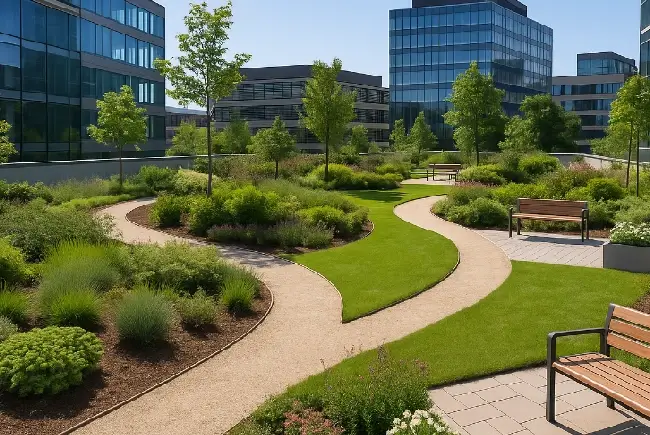
These are the full-package rooftop gardens. Intensive green roofs use deeper soil (6 inches and up, sometimes over a foot) and can support a wide variety of plant material, including shrubs, small trees, and even vegetable gardens. They often require drip irrigation, regular fertilization, and seasonal upkeep.
They also weigh more, which means your roof must be engineered to support the load. But if you’re going for a space that tenants or customers can use (e.g., a rooftop patio, green space, or event space), an intensive green roof makes a big impression.
3. Semi-Intensive Green Roofs

Semi-intensive (or semi-extensive) green roofs are the middle ground. They have moderate soil depths and can support a wider variety of plants than extensive roofs without the full structural and maintenance demands of an intensive green system.
This is a smart option for building owners who want to increase biodiversity and visual appeal but don’t want to commit to a full rooftop garden setup. With the right green roof manufacturer and plant selection, semi-intensive systems can look great and perform well without becoming too complex to manage.
Green Roof Installation Process

Installing green roofs requires a carefully planned system that involves multiple layers of protection and performance. Below, you’ll find the common approach to green roof installations:
Step 1: Site and Structural Assessment
Before roofers even start designing your green roof, they evaluate your building. That means reviewing the existing structure, checking how much load your roof can handle, inspecting the waterproofing membrane, and understanding your stormwater management needs. This is especially important for older buildings that may not have been designed for extra weight.
They also consider how your roof drains, where water might pond, and how easy it will be to access the roof for future maintenance.
Step 2: Waterproofing and Drainage Layer
The next step is preparing the roof deck. Roofers reinforce or replace the waterproofing membrane to protect the building underneath. Then they add a root barrier to prevent plants from penetrating the membrane, followed by a drainage layer that lets water flow where it needs to.
This is where it pays to work with an experienced green roof contractor. Poor drainage can cause water to back up, freeze, or damage the system. But with proper slope and water routing, your green roof works with nature, not against it.
Step 3: Soil and Vegetation Installation
Depending on your system (extensive, intensive, or semi-intensive), roofers install the appropriate soil depth and type. The growing medium isn’t just dirt—it’s engineered soil that supports plant health while staying light enough not to overload the structure.
Vegetation may be installed as pre-grown mats, individual plants, or modules. Many green roof products use native plants that are hardy, low-maintenance, and drought-tolerant, which is a perfect fit for Oklahoma’s unpredictable climate. Irrigation systems can also be installed if needed, especially for intensive roofs or rooftop gardens that will include larger plants or see frequent use.
Step 4: Final Touches and Maintenance Planning
Once the green roof is installed, roofers test all systems: drainage, irrigation, and waterproofing. Then they create a maintenance plan tailored to your building and green roof design. This may include seasonal checkups, plant care, weeding, and irrigation adjustments.
A well-maintained green roof keeps delivering benefits year after year, whether it’s reducing heating costs, saving energy, filtering air, or simply providing a beautiful green space in the heart of the city.
Ready to Go Green? Let’s Talk.
If you’re considering green roofs for commercial properties in Oklahoma City or nearby, we’d love to help. Maupin Roofing brings decades of experience in commercial roofing in OKC, and we understand the details that make green roof infrastructure successful. Our team carefully selects construction materials that support sustainability and long-term performance, making sure your roof system aligns with local green roof policies and industry best practices.
So if you’re exploring extensive green roofs for stormwater management or designing a rooftop garden with solar panels and drip irrigation, we’ll walk you through the process from start to finish, including options for optimizing energy generated through solar integration.
Reach out for a free quote and let’s see if a green roof makes sense for your building, your goals, and your budget. We’re here to make it easy for property owners like you, and to help your commercial property stand out with sustainable, high-performance roofing that goes beyond the basics.
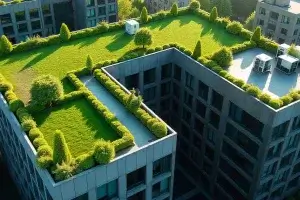
Green Roofs for Commercial Properties: Suitability, Types & Benefits
Green roofing systems replace or layer over traditional materials with soil, native plants, and engineered drainage systems that allow the roof to become a living

Boosting Curb Appeal with Exterior Colors: 12 Color Combos to Try
Before anyone notices your landscaping or your roofline, they notice color, which is why boosting curb appeal with exterior colors is such a powerful move.

Residential Roof Maintenance Tips for Longevity
Your roof does more than cap off your home. It shields everything beneath it from Oklahoma’s heat, high winds, ice storms, and heavy rain. That’s

Modified Bitumen Roofs for Commercial Use: What to Know
Modified bitumen roofs for commercial use have become one of the most trusted options for flat and low-slope buildings for over a century. At Maupin

New Roof Installation Guide for Homeowners
As pros in the roofing industry, we know what really goes into a well-built roof and what can go wrong when corners are cut. A
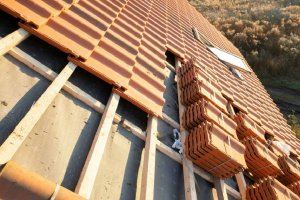
Best Time to Install a New Roof in Oklahoma
Something we often see is homeowners waiting too long to replace a worn-out roof, only to get caught in the middle of inclement weather or

